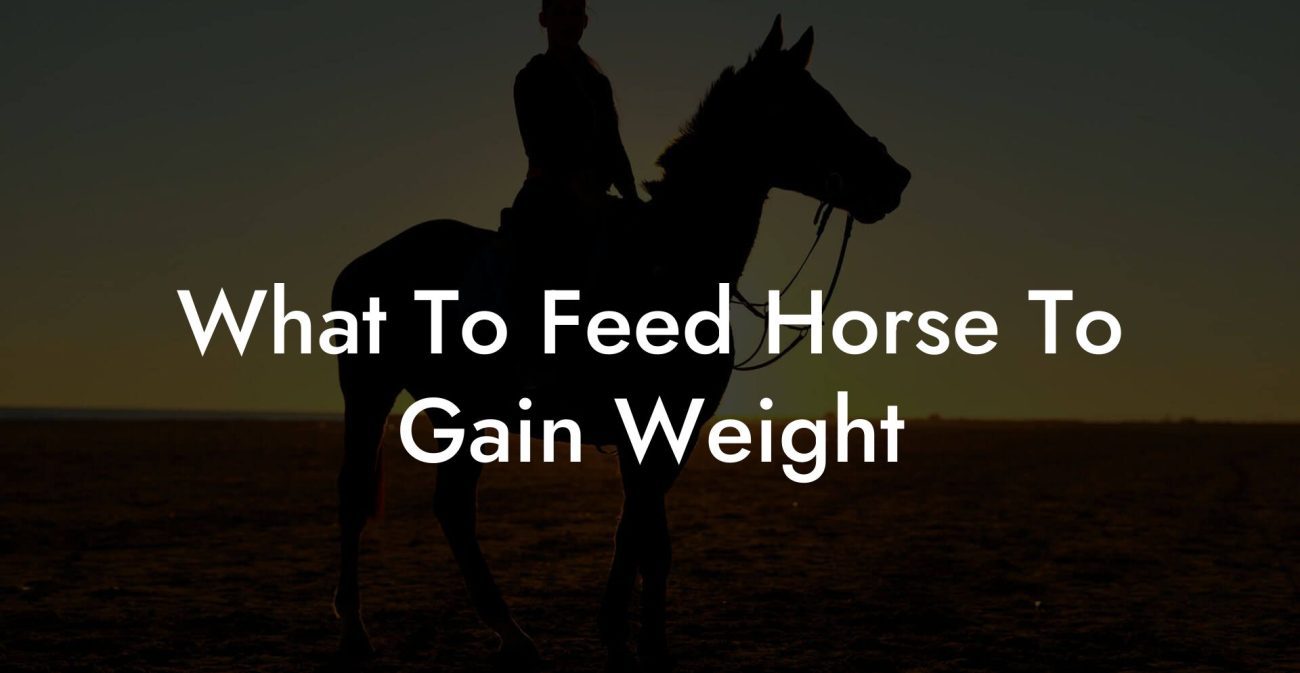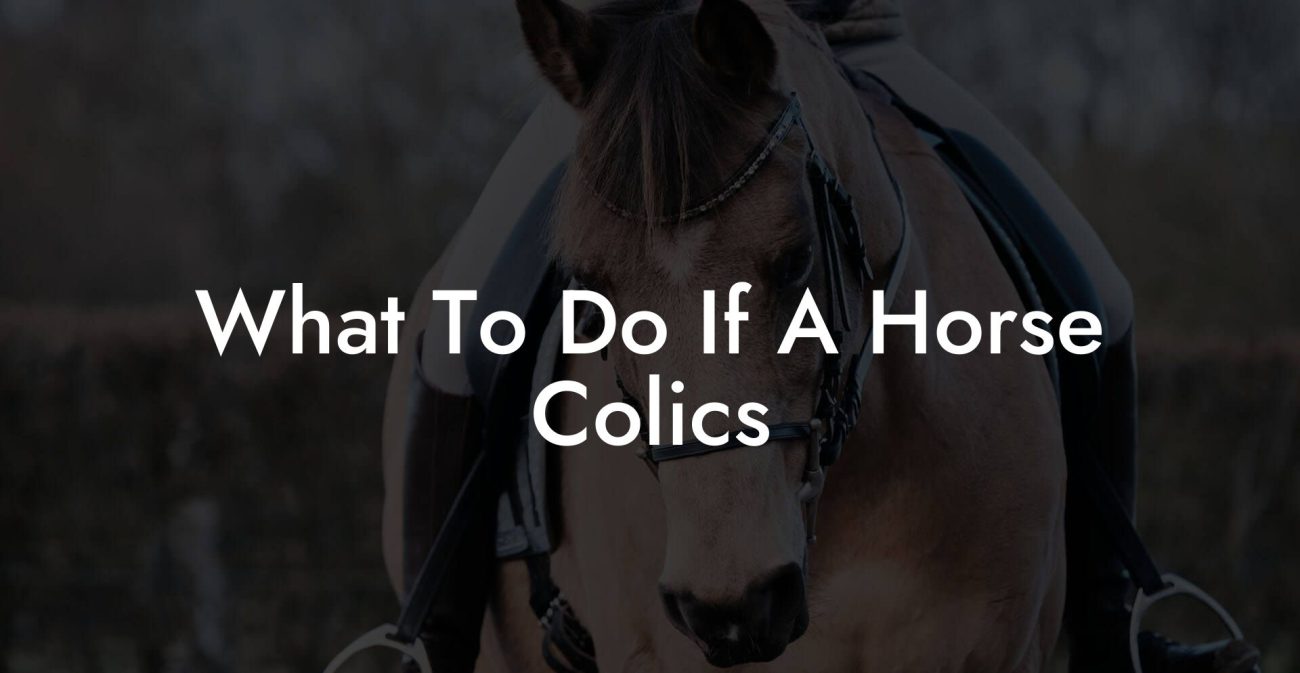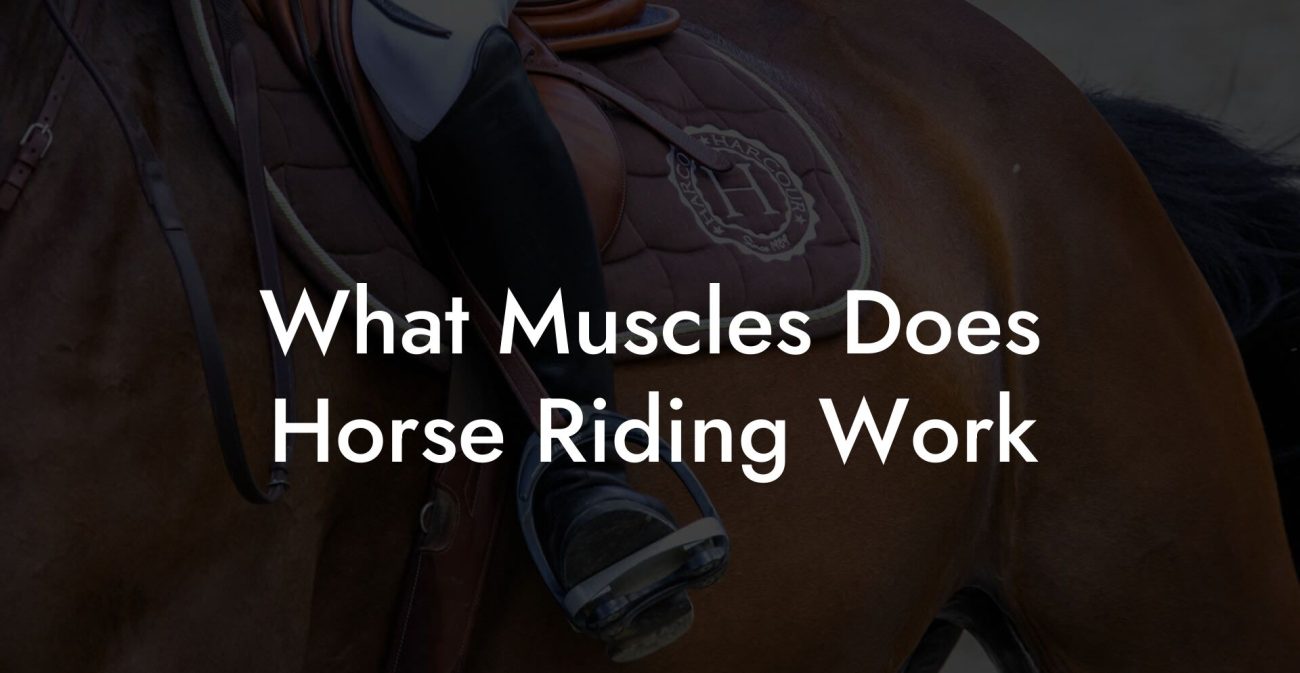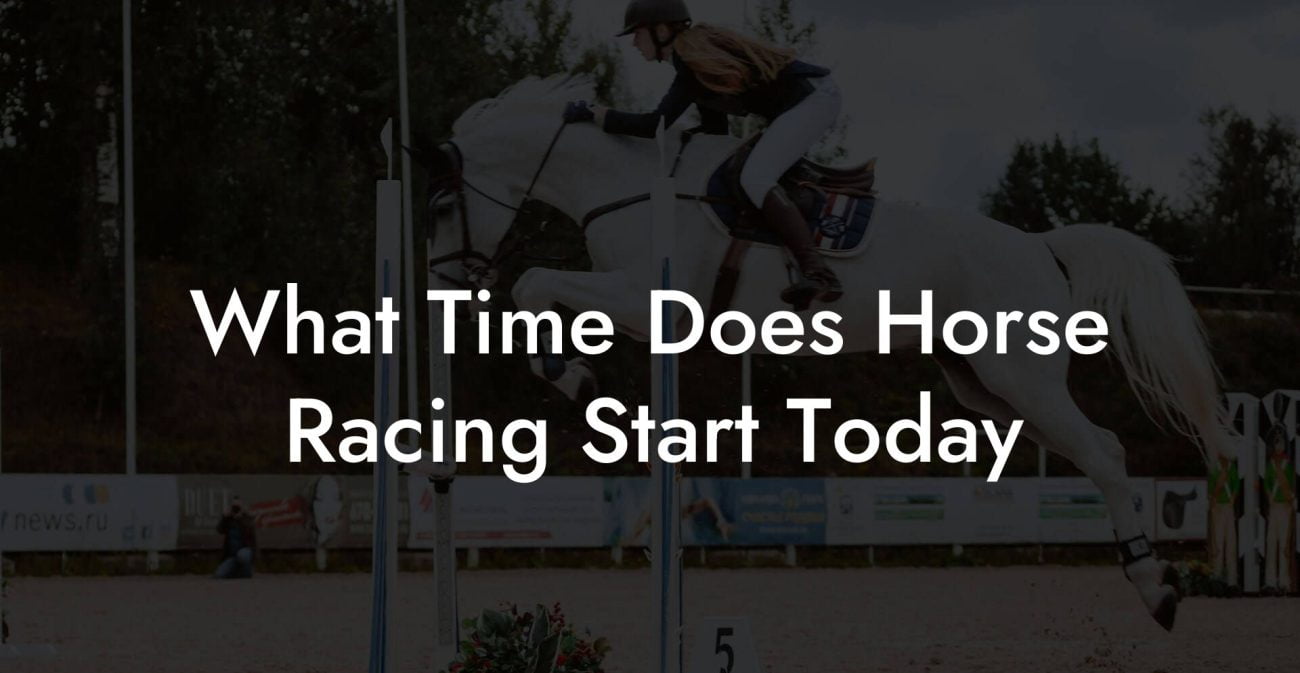Balancing the weight between you and your four-legged friend might sound as perplexing as choosing the perfect filter for your latest Instagram post, but when it comes to horse-to-rider weight ratio, it’s a game-changer for both performance and overall equine health. Whether you’re a trendy Gen Z rider or a millennial equestrian enthusiast, understanding the science, strategy, and art behind this delicate balance can turn every ride into a smoother, healthier, and more confident experience. Let’s saddle up, dive into the details, and explore why that ratio matters, and how you can nail it like a pro.
Quick Links to Useful Sections
- Understanding the Horse To Rider Weight Ratio
- A Brief History of the Horse To Rider Weight Debate
- The Science Behind Weight Balance: Why It Matters
- Calculating Your Horse’s Ideal Rider Weight Ratio
- Impact on Equine Health and Performance
- Common Misconceptions About Weight Ratios
- Tips for Maintaining a Healthy Horse-To-Rider Weight Ratio
- 1. Regular Weigh-Ins
- 2. Invest in Lightweight, High-Tech Equipment
- 3. Optimize Your Riding Technique
- 4. Cross-Train and Strengthen
- 5. Consult Equine Specialists Regularly
- Customizing the Ratio: Factors That Influence the Ideal Weight Load
- Riding Styles and Their Influence on Weight Distribution
- Western Riding
- English Riding
- Trail Riding and Endurance
- Expert Guidance: Consulting Professionals on Weight Management
- Resources and Community Support: Your Next Steps
- Equestrian Lifestyle and Sustainability: A Modern Perspective
- Real-Life Success Stories: Riders Who Got It Right
- The Trailblazer
- The Competitive Equestrian
- The Newbie’s Awakening
- Strategies to Enhance Horse Performance Through Weight Management
- FAQs About Horse To Rider Weight Ratio
- Your Journey to a Balanced, Thriving Equestrian Lifestyle
Understanding the Horse To Rider Weight Ratio
When you think of style, balance, and precision, you might picture a dancer twirling under bright lights or a skateboarder landing a flawless trick. But in the equestrian world, the horse-to-rider weight ratio is the unsung hero that determines comfort, performance, and long-term health for your noble steed. At its core, this ratio is the relationship between the total weight of the rider (including tack) and the body weight of the horse, ensuring that neither partner is overloaded.
In practical terms, the ideal ratio means that your horse can carry you without feeling like it’s lugging around an extra backpack on every ride. Overburdening your horse not only compromises its athletic performance but can also lead to long-term joint damage, discomfort, and even behavioral issues. Conversely, when balanced right, the horse (and you!) can enjoy a harmonious partnership that breeds trust, agility, and overall health.
As riding styles and horse disciplines continue to evolve, modern riders, especially those who appreciate a blend of science and style, are becoming more mindful of how weight distribution affects speed, stamina, and even the emotional well-being of their equine companion. In today’s fast-paced world, where every detail counts, getting your weight ratio right is just as important as your riding outfit or Instagram aesthetic.
A Brief History of the Horse To Rider Weight Debate
Believe it or not, the conversation around the horse-to-rider weight ratio isn’t a modern invention whipped up by wellness influencers overnight. This debate has been galloping through history for centuries, woven into the fabric of equestrian culture and tradition. Ancient civilizations in Egypt, Rome, and Asia all recognized that a well-balanced rider was pivotal to a horse’s performance, whether in battle, sport, or daily transport.
Historical texts and cave paintings often reveal scenes of riders who were not only warriors or nobles but also savvy in the art of weight distribution. Over time, as riding evolved from a practical mode of transportation to a refined sport and leisure activity, experts began quantifying what “ideal” looked like. While modern technology and biomechanics have since added a scientific layer to these observations, that age-old wisdom still holds true: respecting the physical limits of a horse is paramount.
Today’s research marries tradition with technology, using motion capture, force sensors, and in-depth biomechanical studies to refine our understanding of the horse-to-rider weight ratio. This blend of old-school instincts and cutting-edge science helps ensure that every ride is both comfortable for your horse and exhilarating for you.
The Science Behind Weight Balance: Why It Matters
Let’s break it down: the science of weight distribution isn’t all dusty textbooks and lab coats, it’s about the practical mechanics that make your ride as smooth as your favorite Spotify playlist. When you mount a horse, your body weight and position affect the horse’s center of gravity. A properly distributed load means the horse’s back isn’t straining under uneven pressure, which directly influences its posture, speed, and agility.
Research shows that most performance horses do best when the rider’s weight does not exceed 15-20% of the horse’s body weight. However, this isn’t a one-size-fits-all number. Factors such as the horse’s build, training level, and discipline play a significant role in determining the optimum ratio. For instance, a robust Quarter Horse might carry a bit more than a delicate Arabian without adverse effects.
Biomechanically speaking, when the weight is evenly distributed, the horse’s spine, muscles, and internal organs remain supported, enabling efficient movement and injury prevention. On the flip side, an imbalanced load forces the horse to compensate, often through overstraining its back muscles or altering its natural gait, leading to an increased risk of soreness, stiffness, and long-term musculoskeletal issues.
The science is clear: by understanding and respecting the ideal horse-to-rider weight ratio, you are actively contributing to your horse’s overall well-being, ensuring that its performance stays top-notch while minimizing the risk of injuries.
Calculating Your Horse’s Ideal Rider Weight Ratio
Now that we’re all about embracing balance, let’s get practical: How do you calculate the perfect weight ratio to ensure that your horse remains happy and healthy? First, you need to know two things, the weight of your horse and the total weight of you and your riding gear.
Step 1: Weigh Your Horse.
Modern technology allows you to weigh your horse using specialized scales found at many stables or veterinary centers. Knowing your horse’s exact weight is crucial, as even a slight miscalculation could affect how much weight it should ideally carry.
Step 2: Add Up the Rider’s Weight.
Consider the weight of the rider along with all the riding gear such as saddles, bridles, and other tack. Every extra ounce matters when it comes to your horse’s comfort!
Step 3: Do the Math.
For example, if your horse weighs 1,000 pounds and you plus your gear weigh 150 pounds, you’re around 15% of your horse’s body weight, a number that sits comfortably within the recommended range for many performance horses.
It might surprise you to learn that many professionals suggest keeping the ratio below 20% to avoid overburdening the horse, particularly if the horse is in competitive or strenuous activities like jumping, dressage, or endurance riding. When in doubt, consulting with your veterinarian or equine specialist can provide tailored insights specific to your horse’s breed, age, and condition.
Pro tip: Don’t overlook the importance of gear weight. Advances in technology mean more lightweight, durable equipment is available, so modern riders can enjoy all the comforts without adding extra weight. Your next ride might be as much about high-tech gear as it is about bonding with your horse.
Impact on Equine Health and Performance
Ever noticed how a perfectly balanced outfit can boost your mood and performance? The same principle applies to your horse. A well-maintained weight ratio ensures that your horse operates with efficient biomechanics, which in turn enhances its athletic performance, reduces the risk of injury, and supports overall long-term health.
When a horse is overloaded, it’s not just the physical strain that wreaks havoc; the imbalance can lead to behavioral issues as well. A stressed, uncomfortable horse might become resistant, anxious, or even display signs of pain during or after rides. On the other hand, a balanced load can improve a horse’s confidence and willingness to work, turning every ride into a dynamic partnership built on trust.
Regular veterinary check-ups and consultation with an equine physiotherapist can help monitor the impact of weight on your horse's overall health. These professionals look for subtle signs of overloading such as changes in gait, reduced mobility, and even shifts in behavior. Remember, a healthy horse is not only easier to work with but also a more joyful companion both in and out of the arena.
Beyond the physical aspects, the mental well-being of your horse is also at stake. Just as we experience stress with an overweight backpack, horses feel the burden when the load isn’t balanced. A harmonious weight ratio contributes to an overall sense of well-being, allowing your horse to run, jump, and trot with a natural, free-flowing grace.
Common Misconceptions About Weight Ratios
In the digital age of quick tips and myths, several misconceptions about horse-to-rider weight ratios have persisted like old memes that just won’t die. One big myth is that all horses can comfortably support a rider regardless of size, this is as inaccurate as believing every avocado toast is calorie-free.
Another popular misconception is that the weight of the gear can be safely ignored. Not true! While your spearheaded high-tech leather saddle might look sleek, every piece of tack adds to the total weight load, and even a few extra pounds can change the dynamics significantly.
Lastly, some assume that modern horses are built tough enough to disregard these ratios. However, regardless of breed or training, every horse has limits to ensure long-term success and health. Just as you wouldn’t overload your favorite smartphone with too many apps and expect it to run smoothly, pushing a horse beyond its natural capacity is a recipe for frustration, for both of you.
Dispelling these myths is key to promoting a culture of better equine care, where every rider takes accountability for their impact on their horse’s health.
Tips for Maintaining a Healthy Horse-To-Rider Weight Ratio
Maintaining an optimal weight ratio is as much about smart riding practices as it is about thoughtful gear choices. Here are some hands-on (or should we say hooves-on) tips to ensure you and your horse are always on the right track:
1. Regular Weigh-Ins
Frequent weigh-ins for both your horse and yourself (including sneaky gear weights) can help you adjust on the fly. In the age of smart scales and fitness apps, tracking this data is easier, and more fun, than ever.
2. Invest in Lightweight, High-Tech Equipment
Explore new materials and designs that reduce tack weight. Modern saddlery is designed with both aesthetics and functionality in mind, ensuring that your horse doesn’t carry more than its fair share.
3. Optimize Your Riding Technique
Improving your riding posture can make a significant difference in weight distribution. A balanced center of gravity not only eases the load on your horse’s back but also enhances your riding performance.
4. Cross-Train and Strengthen
Enhancing your core strength through yoga, Pilates, or targeted workouts ensures that your movements are controlled and precise, lowering the risk of unintentional weight shifts during a ride.
5. Consult Equine Specialists Regularly
Periodic assessments by veterinarians or equine physiotherapists can help monitor how weight impacts your horse’s musculoskeletal system over time. These experts can provide personalized recommendations tailored to your horse’s unique needs.
Integrating these tips into your regular riding routine not only safeguards your horse’s physical health but also reinforces a deeper, more respectful bond between you and your equine partner.
Customizing the Ratio: Factors That Influence the Ideal Weight Load
It may sound like a math problem from your high school algebra class, but calculating the best ratio is more nuanced than a simple percentage. Several factors can influence your horse’s ideal rider weight ratio, including:
- Breed and Conformation: Different breeds have different body structures. For example, draft horses are built for strength and may tolerate a slightly higher ratio, while lighter breeds like Arabians are more delicate.
- Age and Fitness Level: A young, agile horse may handle the load differently from an older, more seasoned equine. Fitness levels, training intensity, and overall health are critical components.
- Discipline and Activity Type: Whether you’re into dressage, show jumping, or trail riding affects how weight impacts performance. High-impact activities may require stricter adherence to lower weight ratios.
- Rider’s Skill Level: A well-trained rider with impeccable form can better distribute weight than someone who is still perfecting their posture.
- Environmental Factors: Terrain, climate, and even the day-to-day condition of the trail can alter the optimal ratio. For instance, riding on rocky terrain might necessitate a more cautious approach.
Understanding these factors ensures that your approach to managing the weight ratio is as dynamic as your riding lifestyle. You’re not just following a rule-of-thumb; you’re engaging with a personalized strategy that respects both your horse and the activity you love.
Riding Styles and Their Influence on Weight Distribution
Just as a DJ tailors the playlist to suit the vibe of the night, different riding styles have unique requirements when it comes to weight distribution. Let’s break down several common riding disciplines and how they factor into the equation:
Western Riding
Known for its relaxed, low-contact style and the iconic Western saddle, Western riding tends to emphasize comfort and stability over aggressive maneuvers. The gear is often bulkier, so keeping the weight ratio optimal means ensuring that every extra pound is deliberately chosen for comfort rather than flash.
English Riding
Whether in dressage, show jumping, or eventing, English riding calls for precise communication and a balanced seat. Here, even a minor shift in weight can make a big difference, so both the rider and saddle must work in harmony to maintain an elegant, efficient balance.
Trail Riding and Endurance
When you’re out on those long, scenic trails or competing in endurance events, the goal is sustainability and performance over time. A well-balanced weight ratio becomes even more critical when your horse has to maintain energy and comfort over extended periods, resisting fatigue and stress.
Whether you're booting it in the wild, striking a pose in the arena, or cruising along scenic country roads, understanding how your riding style influences weight distribution empowers you to make choices that protect your horse’s welfare and amplify your joint performance.
Expert Guidance: Consulting Professionals on Weight Management
As with every smart decision you make, whether it’s choosing the right filter for your Snap or the perfect outfit for a festival, the advice of professionals is invaluable. Equine veterinarians, saddle fitters, and equine physiotherapists can offer detailed assessments that take into account your horse’s body mechanics, fitness, and lifestyle.
A regular consultation with these experts not only ensures that your horse is in top condition but also adapts your riding practices as your horse grows and changes. Think of it as having a personal trainer and stylist rolled into one, making sure your equine partner is always riding at peak performance.
Resources and Community Support: Your Next Steps
Ready to level up your equestrian game? Connect with online communities, join local riding clubs, and follow equine specialists on social media for the latest tips, workshop updates, and insider advice on maintaining a healthy horse-to-rider weight ratio. Whether you’re a newbie or a seasoned rider, these resources are invaluable for sharing experiences, troubleshooting issues, and advancing your knowledge.
Look for webinars, online courses, and in-person clinics that delve deep into equine biomechanics and proper tack fitting. Peer-to-peer exchanges on forums, Facebook groups, and Instagram hashtags like #EquineLife or #HorseCareTips can spark innovative solutions that blend traditional methods with the latest tech trends.
Embrace the journey of growth alongside your community. With expert tips, robust resources, and a supportive network, you’re well on your way to creating a lasting, positive impact on your horse’s well-being. Your next step? Get out there, share your story, and never stop learning.
Equestrian Lifestyle and Sustainability: A Modern Perspective
As the world shifts towards sustainability and mindful living, the equestrian lifestyle is no exception. Modern riders are increasingly adopting eco-friendly practices, from sustainable tack materials to energy-efficient stable designs, to ensure that their passion for horses aligns with broader environmental values.
A key element of this lifestyle is understanding and practicing responsible care, including managing the horse-to-rider weight ratio. By optimizing weight distribution, you’re not only protecting your horse but also championing a more sustainable approach to riding. With every balanced ride, you contribute to a cycle of care that benefits the animal, the environment, and the equestrian community at large.
Integrating these eco-conscious practices into your routine, like choosing recycled or biodegradable grooming products and supporting local equine businesses, underscores a commitment not only to your horse’s health but also to a more vibrant, sustainable future.
Real-Life Success Stories: Riders Who Got It Right
Sometimes the best way to understand the impact of a balanced horse-to-rider weight ratio is to see it in action. Meet a few riders who transformed their riding experiences by embracing informed weight management.
The Trailblazer
Jenna, a passionate trail rider, discovered that her horse, Blue, was showing subtle signs of discomfort on long rides. After attending a workshop on equine biomechanics, Jenna learned how even small adjustments in gear and posture could make a significant difference. By investing in a high-tech, lightweight saddle and recalibrating her riding position, Blue’s performance improved dramatically, and both rider and horse began to enjoy longer, pain-free rides.
The Competitive Equestrian
Mark, a competitive show jumper, once struggled with inconsistent performance in the arena. His breakthrough came when he collaborated with a saddle fitter and an equine physiotherapist to fine-tune his weight ratio. With custom-fitted equipment and targeted core exercises, Mark’s horse not only became more agile but also responded more dynamically to subtle cues, proving that precise weight management is a winning strategy in high-performance settings.
The Newbie’s Awakening
For Lisa, a novice rider stepping into the equestrian world, every ride was a learning experience. After noticing that her horse, Star, was occasionally reluctant to move, Lisa sought advice from experienced riders and online communities. Implementing small but impactful changes, like using lighter tack and working on core stability, she quickly transformed her riding dynamics, proving that even beginners can master the art of a balanced load with proper guidance.
These success stories underscore the transformative power of understanding and adapting to the horse-to-rider weight ratio. Every rider’s journey is unique, but the common thread is clear: respect the balance, and both you and your horse will thrive.
Strategies to Enhance Horse Performance Through Weight Management
Are you ready for your next ride to be your best yet? Focus on the strategies that pave the way for enhanced performance and longevity in your equine journey. Here are some actionable strategies:
- Tailored Training Programs: Work with an equine trainer to create a training regimen that focuses on both your fitness and your horse’s muscular balance. A schedule that includes smart weight management can improve endurance and agility.
- Periodic Equipment Upgrades: Stay updated on the latest trends in equine gear. Lightweight materials, ergonomic designs, and custom-fitted equipment ensure that every ride is as balanced as it is stylish.
- Digital Tracking and Monitoring: Use modern technology like fitness apps and smart scales designed for horses. Tracking both your weight and your horse’s condition can provide early warnings of imbalance before problems arise.
- Open Communication: Always consider feedback from your equine partner. Over time, horses signal discomfort through subtle behavioral cues. Learn to spot these signs early, and adjust your riding style accordingly.
Integrating these strategies into your routine not only improves performance but also reinforces a partnership built on mutual respect and understanding.
FAQs About Horse To Rider Weight Ratio
Let’s break down some of the most common questions riders ask about the horse-to-rider weight ratio, from the nitty-gritty calculations to the broader implications on horse care.
1. What is the ideal horse-to-rider weight ratio?
While the recommended range typically sits between 15-20% of the horse’s body weight (including gear), the best ratio depends on your horse’s breed, fitness, and discipline.
2. How do I accurately measure my horse’s weight?
Many stables, veterinary clinics, or equine centers have specialized scales for horses. Regular weigh-ins help monitor any fluctuations that might affect the ideal ratio.
3. Does the weight of riding gear really make a difference?
Absolutely. Every piece of equipment counts. Modern, lightweight tack is designed to minimize the load on your horse, making it easier to maintain the correct balance.
4. Can I ride my horse if I’m slightly above the recommended weight?
It depends on your horse’s build and overall health. Consult with an equine specialist to evaluate if any adjustments in your riding technique or equipment are needed.
5. How can I tell if my horse is uncomfortable with the load?
Indicators include changes in gait, reluctance to move, excessive sweating, or subtle behavioral cues like shifting weight. Regular assessments by a professional are key.
6. Is the weight ratio more important in competitive riding?
Yes. In competitive settings, the right weight distribution can significantly influence agility, speed, and overall performance. It’s as much about winning as it is about ensuring your horse’s welfare.
7. Are there any tools to help manage and monitor weight ratios?
Modern technology offers everything from digital scales to fitness tracking apps specifically designed for equine health monitoring.
Your Journey to a Balanced, Thriving Equestrian Lifestyle
Embracing the horse-to-rider weight ratio isn’t just about numbers, it’s about forging a partnership founded on respect, science, and care. Every stride your horse takes is a testament to the care you invest in balancing weight, ensuring that both of you share the joy of every ride. From upgrading your riding gear to fine-tuning your posture and establishing regular health checks, you’re crafting a journey that’s as empowering as it is fun.
In today’s world, where every detail, from the posts you share to the choices you make, echoes who you are, understanding and applying the principles of proper weight distribution is a mark of a thoughtful rider. One who is in tune with both their own physical prowess and the well-being of their beloved equine partner.
Whether you’re hitting the trails on a lazy afternoon ride or gearing up for a competitive event, your commitment to balanced, mindful riding is a step towards a healthier, more sustainable equestrian lifestyle. Keep learning, adjusting, and thriving, and know that every thoughtful decision makes your bond with your horse even stronger.
So, as you step into the saddle next time, remember: you’re not just riding a horse; you’re embracing a lifestyle that combines passion, precision, and a little bit of science to create magic on every ride.













